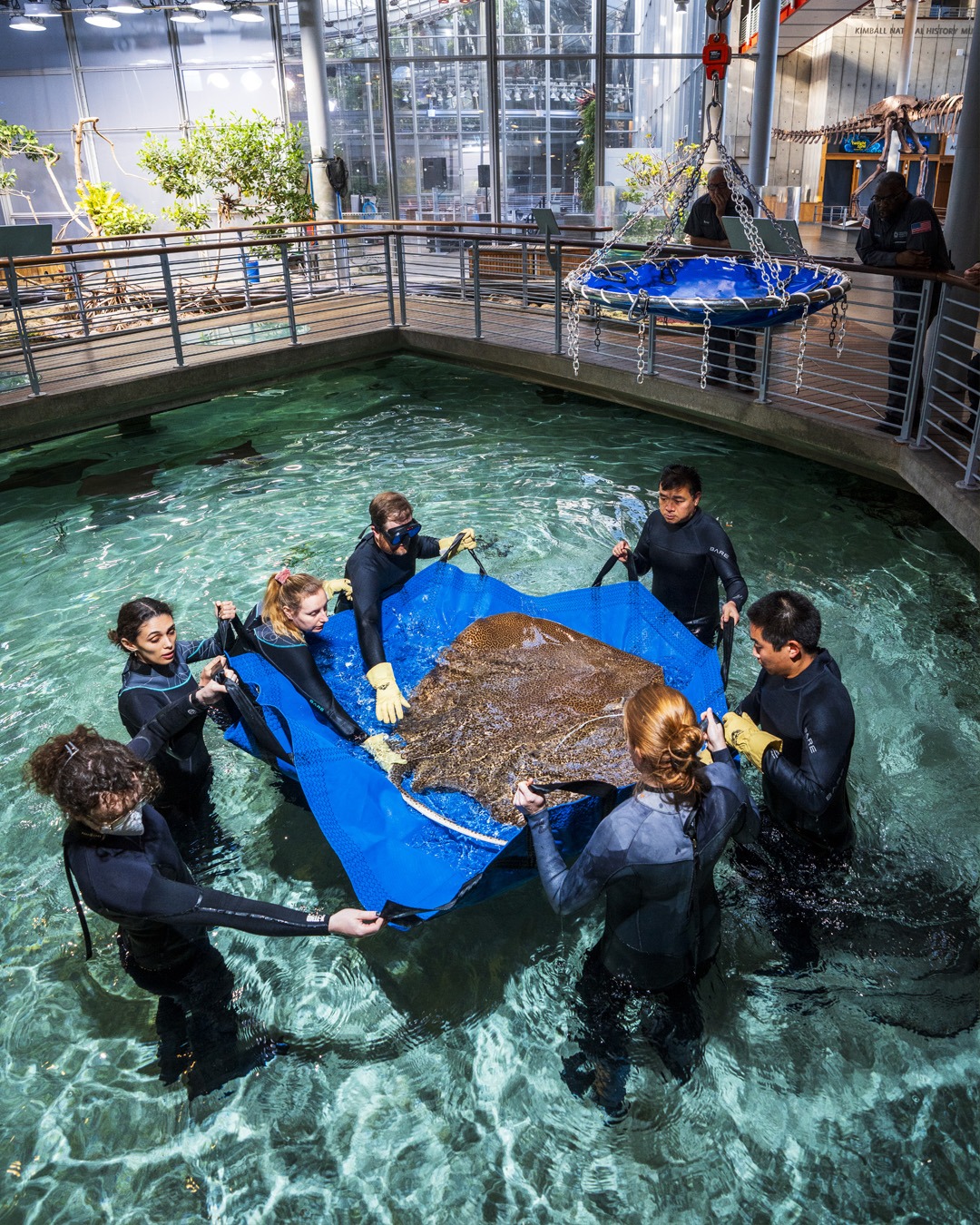- The complexity of performing regular health checkups on honeycomb stingrays.
- The coordination required among veterinarians, biologists, and animal caretakers.
- The use of specialized equipment to handle stingrays safely and efficiently.
- Importance of regular health monitoring for aquatic species in controlled environments.
- Contributions of aquarium and marine teams to conservation and animal well-being.
Performing regular health checkups on a honeycomb stingray is an intricate task requiring collaboration among various specialists. This process involves nearly a dozen biologists, along with a small crane, to ensure that the stingray is examined thoroughly and safely. Each step is critical to maintaining the health and well-being of these captivating creatures.
The complexity of the checkup process begins with planning and preparation. Bringing together a team of experienced biologists and veterinarians is crucial. Each member has a specific role, whether it’s monitoring the stingray’s vital signs or assessing its physical condition. Careful consideration is needed to minimize stress and risk to the animal. The physical health of the stingray is a priority, demanding keen attention from the team.
Coordination is key among the different roles involved. Biologists must communicate effectively with veterinarians to share observations and make informed decisions. Animal caretakers play a supportive role, familiarizing the team with the stingray’s unique habits and behaviors. This collaboration ensures that all team members are aligned in their approach, fostering a comprehensive assessment.
Specialized equipment also plays a pivotal role in the process. A small crane is often used to safely lift the stingray out of the water to conduct examinations without causing harm. These tools are designed to work with the animal’s physiology, promoting safety and comfort. The use of proper equipment is critical, as it protects both the animal and the handlers.
Regular health monitoring of aquatic species like the honeycomb stingray is vital in a controlled environment such as an aquarium. The closed habitat necessitates regular checkups to prevent the spread of diseases and ensure optimal living conditions. These assessments help identify potential health issues early, ensuring timely intervention.
Aquarium and marine teams contribute significantly to conservation efforts and animal welfare. Their expertise in handling stingrays extends beyond health checkups to include education and awareness initiatives. By sharing knowledge with the public, they advocate for the protection and preservation of marine life, reinforcing the importance of biodiversity.
Throughout the process, focus remains on maintaining the health and thriving conditions of the honeycomb stingray. Veterinary and aquarium teams work tirelessly to uphold high standards of care. Their dedication ensures that such remarkable creatures continue to inspire and educate future generations, highlighting the critical role of collaborative efforts in wildlife conservation.
*****
Source Description
How many biologists does it take to give a honeycomb stingray its regular checkup? Almost a dozen and a small crane. 🏗️
The logistics of making sure our animals are healthy and thriving has its challenges, but are definitely appreciated. Shout-out to our fantastic vet and aquarium teams! 🩺


